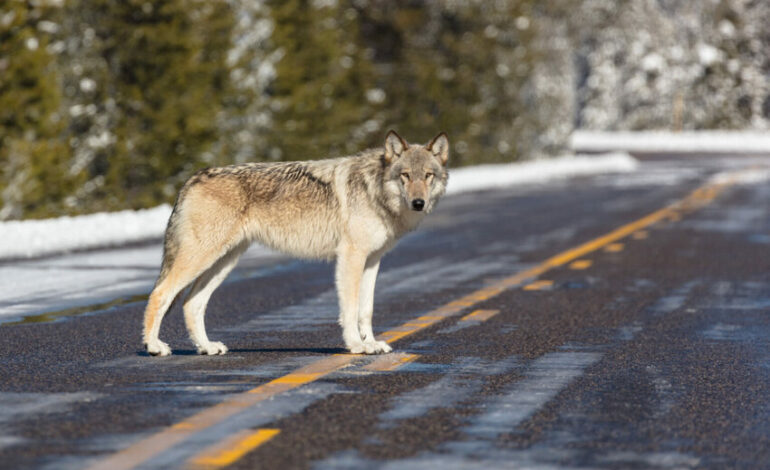Federal Court Reinstates Endangered Status for Gray Wolves

UPDATE: A federal court ruling has just overturned the U.S. Fish and Wildlife Service’s (FWS) previous decision not to grant increased federal protections to gray wolves in the Western United States. The ruling, issued by U.S. District Court Judge Donald Molloy on August 5, 2024, demands a re-evaluation of the species’ status under the Endangered Species Act (ESA), a significant victory for conservation groups.
This urgent decision comes in response to lawsuits filed by over 70 conservation organizations, including the Center for Biological Diversity and Sierra Club, which argued that FWS ignored crucial scientific data regarding wolf populations and hunting pressures. The court’s ruling is a pivotal moment in efforts to protect these iconic animals, which have struggled to recover in several states due to aggressive management practices.
Judge Molloy stated that the FWS had made “numerous unfounded assumptions” about the future of gray wolves, which are currently estimated to number approximately 2,797 in the western U.S. This includes around 1,000 in both Montana and Idaho, fewer than 400 in Wyoming, and about 200 in Oregon and Washington. The ruling effectively vacates the FWS’s assertion that gray wolves do not meet the criteria for being classified as endangered or threatened.
In a statement following the ruling, Matthew Bishop, senior attorney at the Western Environmental Law Center, emphasized the importance of this decision. “The Endangered Species Act requires the FWS to consider the best available science, and that requirement is what won the day for wolves in this case,” he said. This highlights the ongoing struggle for wolf recovery across the West, especially amidst state policies that encourage hunting.
The FWS had previously declined to change the gray wolf’s status in a February 2024 determination, arguing that the species was not in danger of extinction. However, conservation groups have long maintained that high hunting quotas and inadequate protections threaten the wolf population’s future. In fact, the new ruling signals a concerning trend as states like Montana pursue aggressive measures to reduce wolf numbers, prompting fears of a potential relisting of the species.
Montana’s wildlife officials, including spokesperson Kaitlin Price, reacted negatively to the court’s decision, describing it as a ruling by an “activist” judge. “Montana has a healthy, sustainable population of wolves,” Price stated, asserting that the decision would not affect the state’s management plans. Nevertheless, the ruling compels the FWS to reassess its management strategies and consider the implications of state-led hunting policies that could decimate wolf populations.
As the FWS begins to revisit its findings, the spotlight is on how these developments will affect management practices in states like Montana, where new proposals could allow hunters to kill up to 500 wolves in the upcoming season, a significant increase from last year’s quota of 334. Conservationists worry that such measures, coupled with political pressures, undermine the long-term viability of the species.
Court documents reveal a troubling reality: the FWS’s failure to account for uncertainties in population estimates and the influence of political climates on wildlife management. Judge Molloy emphasized that the management of gray wolves must not be dictated by fluctuating political agendas, warning of a “Catch-22” situation where state actions could lead to the species needing federal protections once again.
The next steps for the FWS remain uncertain as this ruling pushes them to reconsider the gray wolf’s status. Conservation groups are urging immediate action to ensure that federal protections are reinstated for these crucial members of the ecosystem.
As this situation develops, stakeholders across the region will be closely monitoring the FWS’s response and the potential implications for gray wolf management. The conversation around wildlife conservation is more urgent than ever, as the fate of the gray wolf hangs in the balance.
Stay tuned for updates on this critical wildlife issue that resonates deeply with conservationists and wildlife enthusiasts alike.






